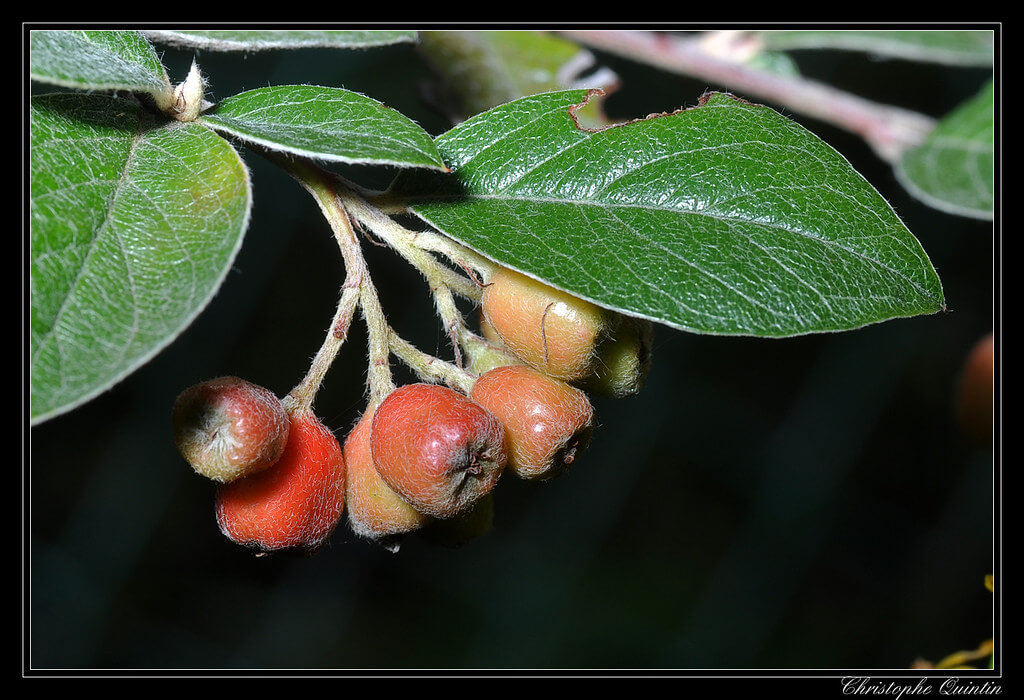Australian Plant Census (2011) available at: Vascular Plants APNI (biodiversity.org.au)
Australia's Virtual Herbarium (AVH) (2007). Council of Heads of Australian Herbaria (CHAH). Available at: Home - AVH (chah.org.au)
Baker, M. (2007). TasWeeds: Khasia Berry (Cotoneaster simonsii).
GRIN (2007). USDA, ARS, National Genetic Resources Program. Germplasm Resources Information Network - [Online Database]. National Germplasm Resources Laboratory, Beltsville, Maryland. Available at: USDA-ARS Germplasm Resources Information Network (GRIN) (ars-grin.gov)
Groves, R.H. & Hosking, J.R. (1997). Recent Incursions of Weeds to Australia 1971-1995. CRC for Weed Management Systems Technical Series No. 3.
Harden G.J. & Rodd, A.N. (1990). Malaceae in Flora of NSW G. Harden (ed), Vol. 1, 1990, page 544. New South Wales University Press, Kensington, NSW.
Jeanes, J.A. & Jobson, P.C. (1996). Rosaceae. In Walsh, N. and Entwisle, T (eds) Flora of Victoria 2, pp. 556-585. Inkata Press, Melbourne.
Lu, L. & Branch, A.R. (2003). Online Flora of China. Cotoneaster franchetii.
Muyt, A. (2001). Bush invaders of south-east Australia, a guide to the identification and control of environmental weeds found in south-east Australia. R.G. & F.J. Richardson, Victoria
Navie S. (2004). Declared Plants of Australia. An identification and information system. Centre for Biological Information Technology: Brisbane. [CD-ROM]
Sigg, J. (2004). Cotoneaster spp. California Invasive Plant Council Database.
USDA, NRCS. (2007). Cotoneaster franchetii. The PLANTS Database National Plant Data Center, Baton Rouge, LA 70874-4490 USA.
Weedbusters (2004). Cotoneaster franchetii.
Williams, P.A. & Karl, B.J. (1996). Fleshy fruits of indigenous and adventive plants in the diet of birds in forest remnants, Nelson, New Zealand. New Zealand Journal of Ecology 20(2): 127-145.
Also see: Blood, K. (2001). Environmental Weeds: A field guide for SE Australia. C.H. Jerram and Associates, Science Publishers , Mt. Waverly.
Calflora (2008). Information on California plants for education, research and conservation. Berkeley, California: The Calflora Database.
Christchurch City Council (2004). Weed of the month June 2004. Cotoneaster spp.
Harley, B. (2007). Weeds of Blue Mountains Bushland. Garden Plants Going Wild. Penrith Art Printing Works.
Agriculture Victoria (2021). Grey Cotoneaster (Cotoneaster franchetii). Agriculture Victoria, Victoria State Government. Available at: Grey Cotoneaster (Cotoneaster franchetii) | VRO | Agriculture Victoria
PlantNET (2021). The NSW Plant Information Network System. Royal Botanic Gardens and Domain Trust, Sydney. Available at: PlantNET - FloraOnline (nsw.gov.au)
POWO (2019). Plants of the World Online. Facilitated by the Royal Botanic Gardens, Kew. Available at: Cotoneaster franchetii Bois | Plants of the World Online | Kew Science
USDA, Agricultural Research Service, National Plant Germplasm System. (2021). Germplasm Resources Information Network (GRIN-Taxonomy). National Germplasm Resources Laboratory, Beltsville, Maryland. Available at: Simple Query Species Data GRIN-Global (pir.sa.gov.au)
VicFlora (2016). Flora of Victoria, Royal Botanic Gardens Victoria. Available at: VicFlora: Cotoneaster franchetii (rbg.vic.gov.au)































